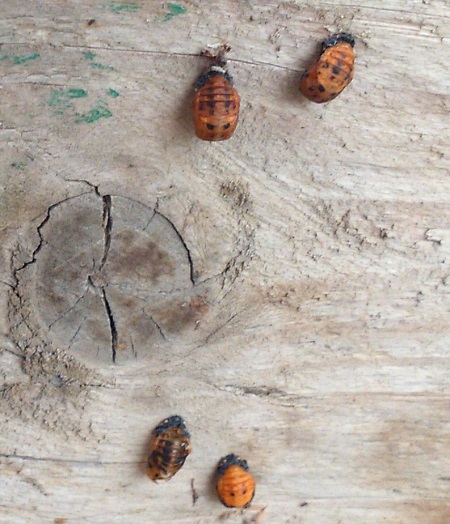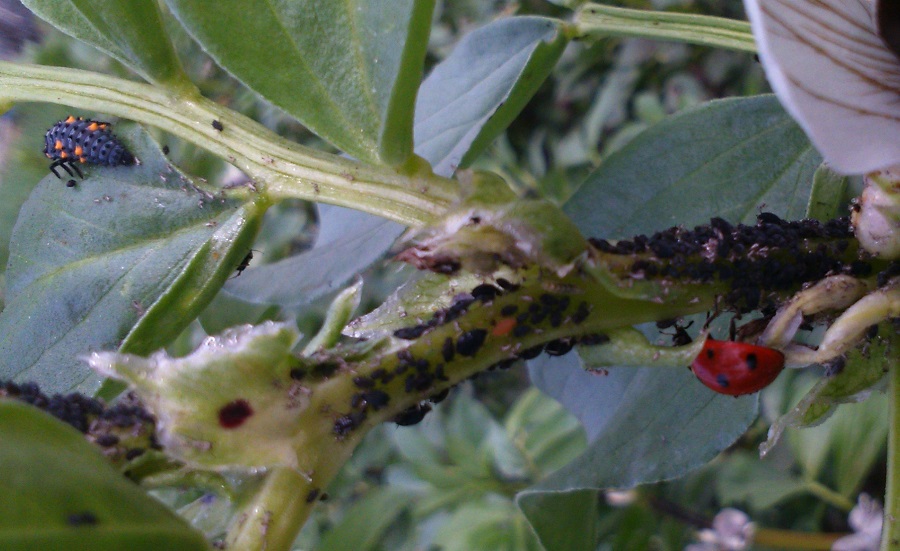Article and photograph by Jacqui Shannon.
One of the biggest questions new organic gardeners ask is about pest management. We all seem to understand the concepts of open pollination and making fertilizers from plants, but when it comes to keeping the pests away, many of us draw a blank. We work so hard to raise our plants that contemplating their decimation is frankly, terrifying. So what can we do?
I am a firm believer that healthy plants and healthy soil do much for our garden when it comes to pests. A strong, healthy plant can tolerate some pests without too much loss. Nonetheless, I also believe in giving the garden a helping hand. One of the principles I learned at Organic Lea was to try and balance the predator / prey ratio. At first, to me at least, this was a bit of a shock. How many aphids should be in the garden? My natural response was “NONE!” But that, it turns out, is also unnatural.
The beans grown in glasshouse, were awash with Black Aphid larvae the first week of April. It seemed a dire situation but no one else seemed concerned. When I asked the head gardener about this, he explained that the crop was nearing it’s last winter harvest and was going to be allowed to flower and go to seed. For now we’d simply run our index finger and thumbs up the most infested stocks to squish the aphid larvae, overrun bean tips were to be removed and put into the compost. Although affective for the larvae stage, this is laborious. Later the same day, our class went out into the nettles to hunt and capture Ladybugs.
Because nettles are one of the first greens of spring, overwintered Ladybugs seek them out as a first source of food. Over two hours we caught twenty. Ladybugs, it turns out are the organic gardeners natural ally against the Aphid. We then released them into the Aphid infested bean plot. Two weeks later, I noticed many tiny cocoons along the wooden skirt boards to the bean plot, Ladybug larvae.

By introducing the Ladybugs to the Glasshouse, we are able to aid in the balance of predator / prey relationship. If we had killed all of the Aphid larvae the food source for the Ladybug wouldn’t have been available and they would not have stayed. By providing a suitable environment for the Ladybug, including food, suitable pupation and hibernation areas, she will then in turn and aid us in the long term pest management. There are many such relationships the organic gardener can cultivate with predator insects, all of which will improve your crops survival.
An important part of organic gardening is being able to identify which insects are the “good guys” and which are the ones you want to try and limit. Most children and adults can identify a 7-Spot Ladybug, I find the link below quite useful for identifying the larvae of others.
https://www.ladybird-survey.org/downloads/ladybird_larvae.pdf
